Dark Was The Night Cold Was The Ground
Dark Was The Night Cold Was The Ground
In 1977 Carl Sagan and a team of researchers were tasked with collecting a representation of Earth and the human experience for sending on the Voyager probe to other life forms in the universe. They collected sounds of frogs, crickets, volcanoes, a human heartbeat, laughter, greetings in 55 languages, and 27 pieces of music on the Voyager Golden Record. "Dark Was the Night, Cold Was the Ground" was included, according to Sagan, because "Johnson's song concerns a situation he faced many times: nightfall with no place to sleep. Since humans appeared on Earth, the shroud of night has yet to fall without touching a man or woman in the same plight."
Dark Was The Night Cold Was The Ground
"Dark Was the Night, Cold Was the Ground" is a gospel-blues song written and performed by Blind Willie Johnson and recorded probably in December 1927.
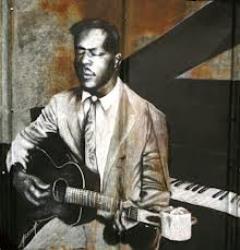
Blind Willie Johnson
Blind Willie Johnson was born in 1897 near Brenham, Texas. Johnson was not born blind. When Willie was seven his father beat his stepmother after catching her going out with another man. According to this account, the stepmother then blinded young Willie by throwing lye in his face.
As he got older, Johnson began earning money by playing his guitar, one of the few avenues left to a blind man to earn a living. Instead of a bottleneck, Johnson actually played slide with a pocketknife.

Dark Was the Night, Cold Was the Ground, singel, 1927
Regardless of his excellent blues technique and sound, Johnson didn't want to be a bluesman, for he was a passionate believer in the Bible. So, he began singing the gospel and interpreting Negro spirituals. He became a Baptist preacher and brought his sermons and music to the streets of the surrounding cities.
Although revered by folk and rock artists like Bob Dylan, Eric Clapton, and Led Zeppelin, seldom does Blind Willie Johnson's name come up in conversation when people talk about the giants of the blues. One reason for this, perhaps, is that Johnson's songs hewed closer to the gospel roots of the blues than those of his musical contemporaries. Another reason for Johnson's relative obscurity was his personal struggle for salvation that would cause him to turn his back on "the devil's music."

Ry Cooder plays Dark Was the Night, Cold Was the Ground
Johnson made 30 commercial recording studio record sides in five separate sessions for Columbia Records from 1927–1930. On some of these recordings Johnson uses a fast rhythmic picking style, while on others he plays slide guitar. According to a reputed one-time acquaintance, Blind Willie McTell (1898–1959), Johnson played with a brass ring, although other sources cite him using a knife. However, in enlargement, the only known photograph of Johnson seems to show that there is an actual bottleneck on the little finger of his left hand.
Johnson remained poor until the end of his life, preaching and singing in the streets of several Texas cities including Beaumont. Johnson lived in the burned ruins of his home, sleeping on a wet bed in the August/September Texas heat. He lived like this until he contracted malarial fever and died on September 18, 1945.
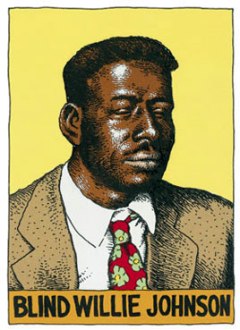
Blind Willie Johnson
"Dark Was the Night, Cold Was the Ground" is primarily an instrumental featuring Johnson's self-taught bottleneck slide guitar and picking style accompanied by his vocalizations of humming and moaning. The song's title is borrowed from a hymn that was popular in the nineteenth century American South with fasola singers. “Gethsemane”, written by English clergyman Thomas Haweis in 1792, begins with the lines “Dark was the night, cold was the ground / on which my Lord was laid.”
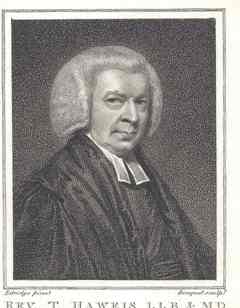
Thomas Haweis
Music historian Mark Humphrey describes Johnson's composition as an impressionistic rendition of “lining out”, a call-and-response style of singing hymns that is common in southern African-American churches.
The song opens with a weeping slide-guitar run that will chill your blood, followed quickly by Johnson's mournful moan, a non-verbal expression of emotion that needs no words. His melancholy, gravel-throated humming of the guitar part creates the impression of "unison moaning", a melodic style common in Baptist churches where, instead of harmonizing, a choir hums or sings the same vocal part, albeit with slight variations among its members. Although Johnson's vocals are indiscernible, several sources indicate the subject of the song is the crucifixion of Christ.

Dark Was the Night, Cold Was the Ground, cover
"Dark Was the Night, Cold Was the Ground" is used in Pier Paolo Pasolini’s The Gospel According to St Matthew; Walk the Line, a biopic of country singer Johnny Cash; The Devil’s Rejects, a serial killer film by rocker Rob Zombie; and Public Enemies, a Michael Mann’s movie about John Dillinger, a famous criminal from ’30s.
Ry Cooder, who based his desolate soundtrack to Paris, Texas on “Dark Was the Night”, described it as “the most soulful, transcendent piece in all American music.”
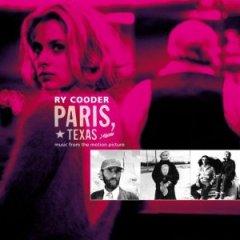
Ry Cooder - Paris, Texas - soundtrack
Thomas Haweis - "Gethsemane"
Dark was the night, cold was the ground, on which my Lord was laid. Mine was the debt, mine was the crime for which my Saviour paid. How could He die? How could He die to save a soul like mine? To save a soul like mine? Cold was the night, black was the tomb. They sealed it with a stone. Still was the air, stilled was His breath, and there He lay alone. Body and blood, broken and shed; the price of love divine. The price of love divine. Dark is my mind, cold is my heart, and black my sin stained soul. Can it be true, can it be real, that God would make me whole? Deep is the pain, deep is the fear, so deep the sin in me. So deep the sin in me. Earthquake and light, wonder and fear, the stone was rolled away! Mighty He rose up from the grave. Oh great and joyful day! Saviour and Lord! Saviour and Lord! His love has set me free! His love has set me free.
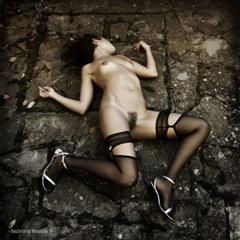
Dark Was the Night, Cold Was the Ground








